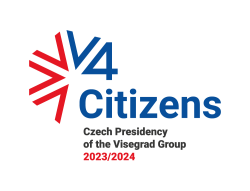
| Sun | Mon | Tue | Wed | Thu |
|---|---|---|---|---|
| 11 | 8 | 8 | 11 | 14 |
| Sun | Mon | Tue | Wed | Thu |
|---|---|---|---|---|
| 11 | 8 | 11 | 15 | 16 |
| Sun | Mon | Tue | Wed | Thu |
|---|---|---|---|---|
| 13 | 10 | 12 | 15 | 17 |
| Sun | Mon | Tue | Wed | Thu |
|---|---|---|---|---|
| 15 | 11 | 12 | 16 | 19 |
Who will heal the Poles?
Subsequent governments have failed to repair Poland’s broken healthcare system, and doctors continue to leave the country in large numbers. We talk to some that have already departed and others that are considering doing so.
There is no single reason an ever increasing number of Polish doctors are deciding to seek employment outside of Poland. Those who’ve already left, or plan to do so, mention everything from low salaries to challenges resulting from the underfunding of the healthcare system in general.
However, the concerns go beyond just the financial. Doctors also point out that the system is disorganized, and its hierarchy obsolete, claiming this corrodes respect for medical professionals and their work. They also mention the medical education system’s hyper-focus on theory over the more practical aspects of a physician’s job, which impacts future doctors’ training.
Breaking records
According to the OECD report, Health at a Glance, 1 Poland underperforms when it comes to the average number of medical personnel per inhabitants. There are only 2.3 doctors and 5.2 nurses for every 1,000 Poles, while the OECD average is 3.3 doctors and 9.1 nurses. Although all Visegrad states fall below the OECD average for the number of nurses per inhabitants, they still perform better than Poland.
When it comes to the number of doctors, Hungary is on par with the OECD average, whereas Slovakia and the Czech Republic even outperform countries like France and the Netherlands. 2
According to the data, Poland ranks last for the number of doctors per inhabitants and fourth to last in the number of nurses per inhabitants among EU countries. 3
The data concerning medical specialists, i.e. doctors that have completed advanced education and clinical training in a specific area of medicine, is of particular concern. Their numbers have steadily declined, as an increasing number of doctors have decided to seek employment abroad. According to the data registered by the Chamber of Physicians and Dentists, which issues certificates recognizing the professional qualifications of doctors who may wish to work abroad in the EU, 4 this year might set a new record for the number of Polish doctors who emigrate. 5
Not only the young are leaving
It is not just the young professionals that are deciding to launch their careers abroad anymore, either. The Chamber of Physicians and Dentists found that of the doctors that have left or would consider leaving Poland, approximately 30% are 30 years old or younger, and nearly 40% are between 40 and 70 years old. 6
Nonetheless, it is still the emigration of the youngest doctors that poses the most concern. The average age of physicians practicing in Poland is 49.5 years old, while the average age of specialists practicing is 54.5 years old. 7
According to the latest OECD data, only 19% of doctors in Poland are 35 and younger. 8
Magdalena Kludacz, a researcher from the Warsaw University of Technology, has written about the Polish healthcare system’s human resource problem, and warns that when Poland’s aging doctors retire, there may not be enough young professionals to replace them. 9
An aging medical professional population is present in many European countries, however Poland has experienced a critical brain drain in this arena for nearly 10 years, and has yet to find a lasting solution.
The number of doctors reportedly leaving Poland now is not particularly shocking when compared to the amount that left after Poland’s accession into the EU in 2004. The Chamber of Physicians and Dentists, reported that in 2005, more than 2,000 of these certificates necessary for applying for a job in another EU country were issued to doctors and nearly 800 to dentists. In the subsequent decade, the number of the certificates issued varied from 600 to 840 a year, with only 500 issued by August in 2016. 10
However, these numbers do not offer a complete snapshot of emigration trends, and the Supreme Audit office has reported it currently lacks a mechanism that might help determine the actual number of Polish medical professionals leaving the country.
This is because applying for a qualification of recognition, does not necessarily mean a physician wants to work abroad, and also because those physicians emigrating to non-EU countries aren’t even accounted for, as they can skip the application process altogether. So, while there is no hard data that reports the exact number of doctors leaving Poland, there is evidence more of them are doing so, and the inability of the Supreme Audit Office to measure the trend, has made it impossible for the Minister of Health to effectively react to the phenomenon. 11
Zyta Kaźmierczak-Zagórska, the Vice President of the Supreme Medical Council, speaks about the current trend as a “doctors’ second wave of migration”. 12
The first wave, which occurred after Poland joined the EU, led the government to introduce new specialization training, or “residencies” (rezydentury). A residency is a form of employment that was made available to young doctors that finished their six-year study programs, passed their final exams, and completed their 13-month post-diploma internships. The number of residencies was decided by the Minister of Health for each of the 16 Polish regions, or voivodships.
The reform’s initial success was based on the decision to raise residents’ salaries to the national average, as this encouraged graduates to pursue positions in the Polish healthcare system. However, in no more than 10 years the success turned to failure because the national average salary increased, while the average physician salary flat-lined. Today a physician’s salary is only 70% of the national average, making it one of the lowest among OECD countries.
Squeezing physicians’ pocketbooks
Polish medical professionals’ low salaries are definitely among the reasons so many doctors are deciding to seek employment abroad. According to the Residents’ Accord of the National Trade Union of Doctors’ (NTUD) website, 13
37% of resident doctors are considering leaving Poland. 14
“We want to stay and work in our homeland, but to do so, we need to be offered a decent standard of living that would allow us to start a family and continue our medical education,” states their declaration. 15
When it comes to specialists, Poland is at the very bottom of the list of European countries, boasting the worst remuneration record – even when compared to some non-EU states within OECD, such as Australia, Mexico or Canada. 16
“I am seriously considering emigration,” a fifth-year student of medicine, Remigiusz, tells the V4Revue. 17
He is involved in the activities of the Medical Professions Accords (Porozumienie Zawodów Medycznych), a group uniting all medical professional trade unions. “I have already researched possibilities and looked into language courses I can attend before leaving Poland,” he says, adding, “believe me, the price of language courses is low when you consider the wages awaiting young doctors abroad!”
At the end of September, Medical Professions Accords members organized a demonstration in Warsaw, and Remigiusz was among those protesting. He says that even though he and his friends are close to making the decision to leave Poland for Germany, Switzerland or Great Britain, one of the protest slogans continues to resonate in his thoughts: “We want a cure in Poland!”
It’s not only about the wages
Poland’s languishing healthcare system is not only reflected in doctors’ meager salaries, but also in the whole system’s underfunding. Currently, general government expenditure on healthcare makes up only 4.38 % of Poland’s GDP, and according to the World Health Organization, in order to provide citizens with proper healthcare, financing should make up 6.8% of the GDP.
Dawid, a final-year medical student with plans to specialize in psychiatry, did three internships in three different countries: one in Poland, another in Ukraine and a third in Austria. “Here, in Poland, as a young doctor, you are a nobody,” he laments. He says that often residents do not have their own offices, so it is common for them to interview patients in hospital corridors. 18
“In Ukraine it is even worse, but in Austria, you get everything – your own office, your own computer, your own desk. There is even disinfectant, soap, paper and a special place to interview patients,” he boasts.
Dawid says he finds the Polish healthcare system’s complete lack of organization frustrating, particularly when compared to the systems in Western Europe. He points out that in Austrian hospitals, “the level of comfort is amazing both for personnel and for patients.” This is not so in Polish hospitals, and according to Dawid, this side of the system’s underfunding is often more important to doctors than the salaries they receive.
Magdalena, a Polish doctor who currently works in Norway, tells the V4Revue that, “it was – and still is – a difficult decision to live elsewhere, to have left my life and family behind and emigrated from Poland.” 19
Her decision to leave her homeland and seek employment in other countries was not based on financial reasons. “Poland’s healthcare system is not working properly because it treats both its patients and personnel poorly,” she laments. She points to the post-Communist hierarchical system that still persists in Polish hospitals, and says it negatively affects the working atmosphere.
“Instead of respecting one another, everyone has inferiority complexes towards those above them. So those higher in the hierarchy treat those lower on the ladder poorly,” she explains. “It was this disrespect, rather than money, that led me to take this step.”
A demand for Polish doctors abroad?
Magdalena admits that finding a job abroad was not easy, and not because of the language barrier, but something more sinister. “It was about a lack of self-respect that I took with me from Poland,” she says. “It made me too humble, and here in Norway, high self-esteem is really valued. Contrary to Poland, everybody’s voice is important,” she explains.
One of the directors in the hospital in Bad Aussee, a small Austrian town where Dawid did his internship, was born in Poland. The director hopes to open a Polish unit in the hospital, which already employs three Polish doctors.
Dawid says that the Polish medical education system’s focus on theoretical traininggives Polish doctors a competitive advantage. Foreign hospitals in other EU countries emphasize the practical side of the profession, so they value Polish doctors’ theoretical foundations, and are equip to offer them the space to practice their knowledge.
According to Dawid, Polish doctors are also valued for their nationality and spoken language. According to data from 2015, approximately 2.1 million of Poles live in other European countries 20 and the demand is high for Polish doctors in European countries with large Polish diasporas, including Great Britain, Germany, the Netherlands, Ireland, Italy and Norway. “In German hospitals, in the areas where large Polish populations live, there is often at least one Polish-speaking doctor,” Dawid says.
Can a foreign workforce heal the Poles?
Dawid is planning to leave Poland: “I am thinking about relocating, either to Germany or Switzerland.” While Magdalena says she has not even once thought about coming back to Poland.
One might assume that the Polish medical professionals that are leaving, might create demand for a foreign workforce’s arrival. Efforts, like the one by the Open Dialog Foundation along with a group of Ukrainian doctors and nurses, hope to encourage Ukrainian personnel to enter the Polish healthcare system, by offering training at Polish hospitals. 21
However, at this point, the goal has not been achieved on a large scale. 22
One reason these types of initiatives lack promise is because the EU has different procedures for recognizing professional qualifications obtained in EU member states than it does for those obtained outside the EU. Diploma nostrification – the official confirmation of one´s education, obtained in his or her home country – can cost up to 1,000 euros. Furthermore, such recognition does not grant one the right to practice, but only the right to apply for the limited license to practice. Only after getting this license, can immigrant doctors start their postgraduate practice, which they must then follow with a passing grade on the state medical exam. 23
The length of the whole process and the financial costs are not particularly encouraging and this is reflected in the numbers. In 2008, foreign-trained doctors made up 2.1% of the total number of doctors practicing in Poland; four years later in 2012, they only amounted to 1.8%. 24
These statistics seem to add insult to injury – the Polish healthcare system is not only losing Polish doctors, but is also unable to attract doctors from abroad to fill the widening personnel gap.
Turning the trend around
As for now there are no substantial initiatives that might improve the situation for Poland’s medical personnel or the Polish healthcare system in general.
In his speech during the September demonstration of medical professions, the Minister of Health said that although he would like to improve Poland’s languishing healthcare system, he lacked the money to do it. 25
Yet he still repeated his campaign promise to increase healthcare spending to 6% of the GDP by 2025, 26 but so far, no actions have been taken to realize that promise. And if the government fails to heal the Polish healthcare system, soon there may not be enough personnel to heal the Poles.
Notes:
- OECD (2015), Health at a Glance 2015: OECD Indicators, OECD Publishing, Paris. DOI: http://bit.ly/2g5b8Lm (accessed December 3, 2016). ↩
- OECD (2015), “Nurses”, in Health at a Glance 2015: OECD Indicators, OECD Publishing, Paris. DOI: http://bit.ly/2fTj4AI (accessed on December 3, 2016); OECD (2015), “Doctors (overall number)”, in Health at a Glance 2015: OECD Indicators, OECD Publishing, Paris. DOI: http://bit.ly/2fTk7kc (accessed December 3, 2016). ↩
- OECD (2015), Health at a Glance 2015: OECD Indicators, OECD Publishing, Paris. DOI: http://bit.ly/2g5b8Lm (accessed December 3, 2016). ↩
- A certificate of recognition is awarded by the Chamber of Physicians and Dentists to attest that a physician or dentist holds a university degree and has the right to practice their profession in Poland. It also states that the Chamber does not possess information that would negatively influence a doctor or dentist’s ethical ability to perform the responsibilities of their jobs. See: Zaświadczenia wydawane przez NRL / Certificates issued by the NRL, http://bit.ly/2iOqK8I (accessed December 20, 2016). ↩
- Between January and August, the Chamber issued 500 certificates recognizing medical qualifications in other EU countries. In all of 2015 less than 840 of such certificates were issued, while in 2014, 820 were. At the beginning of the 2010s no more than 700 certificates were issued yearly. Aleksandra Kurowska, “To mit, że wyjeżdżają młodzi. Starsi lekarze też decydują się na emigrację / It is a myth that only the young ones are leaving. Older doctors also choose emigration,” Gazeta Prawna, January 11, 2016, http://bit.ly/2fy6wvg (accessed October 25, 2016). ↩
- Ibid. ↩
- Romuald Krajewski, “Lekarze specjaliści i lekarze dentyści specjaliści 2015 / Doctor specialists and dentist specialists 2015,” Naczelna Izba Lekarska, June 16, 2015, http://bit.ly/2g1rsOc (accessed October 25, 2016). ↩
- Magdalena Kludacz, “Problem dostępności zasobów ludzkich w polskim systemie ochrony zdrowia na tle innych krajów Organizacji Współpracy Gospodarczej i Rozwoju. / The problem of availability of human resources in the Polish health care system compared to other countries of the Organisation for Economic Cooperation and Development,” Ekonomia i Zarządzanie 7.1 (2015). ↩
- Ibid. ↩
- IB/Rynek Zdrowia, “Polscy lekarze za granicą: padnie emigracyjny rekord? / Polish doctors abroad: will there be an emigration record?” October 24, 2016, http://bit.ly/2eYJPnc (accessed October 27, 2016). ↩
- “NIK o kształceniu kadr medycznych / Supreme Audit Office on education of the medical personnel,” NIK, March 21, 2016, http://bit.ly/2eNVHGB (accessed October 29, 2016). ↩
- “Wiceprezes NRL o przyczynach emigracji lekarzy / Vice President of the Supreme Medical Council on reasons behind the emigration of doctors,” Gazeta Lekarska, March 29, 2016, http://bit.ly/2fZxZZJ (accessed October 27, 2016). ↩
- The Residents’ Accord is the part of the National Union (NTUD), a “representative union” of doctors, which boasts a 10% membership rate; there are apprroximately 100,000 doctors in Poland and only about 15,000 doctors are part of the NTUD. Resident doctors – numbering approximately 15,000, aged 26-38 – can take part in the Residents’ Accord, which represents all resident doctors in their contact with the government and Ministry of Health. Residents’ Accord membership does not automatically grant membership the NTUD. ↩
- “Deklaracja Porozumienia Rezydentów,” Porozumienie Rezydentów OZZL, http://bit.ly/2ePXCKZ (accessed November 11, 2016). ↩
- Ibid. ↩
- “Remuneration of doctors (general practitioners and specialists)”, in Health at a Glance 2015: OECD Indicators, OECD Publishing, 2015, Paris. DOI: http://bit.ly/2gTxoXo (accessed December 3, 2016). ↩
- Remigiusz, all further quotes taken from an email exchange with the author, September 26, 2016. ↩
- Dawid, all further quotes taken from a Skype conversation with the author, September 29, 2016. ↩
- Magdalena, all further quotes taken from an email exchange with the author, October 26, 2016. ↩
- “GUS: w 2015 r. wzrosła liczba emigrantów. Za granicą już ponad 2 mln Polaków / Central Statistical Office: the number of emigrants increased in 2015. More than 2 million Poles live abroad,” Polskie Radio, September 6, 2016, http://bit.ly/2gPtKvL (accessed December 17, 2016). ↩
- “Program Medyczny / Medical Program,” Open Dialog Foundation, http://bit.ly/2fIUKNu (accessed November 10, 2016). ↩
- Marzena Sygut, “Czy będą nas leczyć ukraińscy lekarze i pielęgniarki? Są takie propozycje / Are we going to be cured by Ukrainian doctors and nurses? There are such propositions,” Rynek Zdrowia, February 29, 2016, http://bit.ly/1Qj9L68 (accessed November 9, 2016). ↩
- Jakub Korus, “W Polsce brakuje lekarzy. Ale tym, którzy przyjeżdżają z zagranicy, rzucamy kłody pod nogi / Poland lacks doctors. But those, who come from abroad, have obstacles put in their way,” Newsweek, June 7, 2016, http://bit.ly/2hOgolt (accessed December 17, 2016). ↩
- Health Workforce Policies in OECD Countries: Right Jobs, Right Skills, Right Places. Foreign-trained doctors working in 26 OECD countries, 2000, 2006 and 2012-14, http://bit.ly/2gSFmCo (accessed December 3, 2016). ↩
- Adriana Rozwadowska, “Przez Warszawę przeszła manifestacja Porozumienia Zawodów Medycznych. Minister Radziwiłł wyszedł na scenę. Tłum krzyczał: ‘Kompromitacja!’” / Manifestation of the Medical Professionals Accords went through Warsaw. Minister Radziwiłł came on stage. The crowd shouted: ‘Compromitation!’,” Op. Cit. ↩
- Ibid. ↩
Read the original text in Visegrad Revue.
This article has been automatically generated from the Visegrad Revue webzine, a project funded by the International Visegrad Fund. The opinions expressed in this article do not necessarily have to represent the official position of the donor, the Visegrad Group, or the publisher (Democracy in Central Europe).







